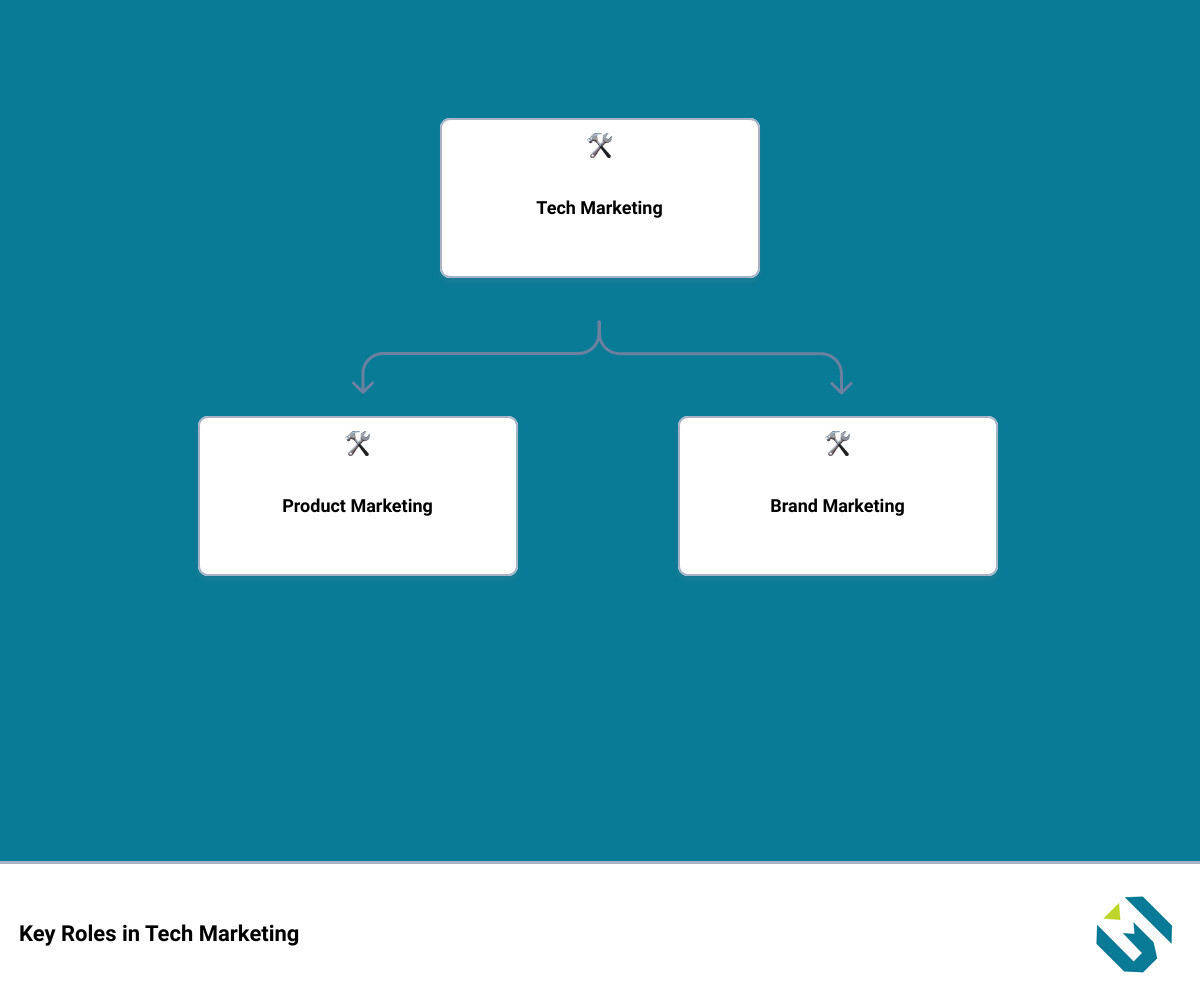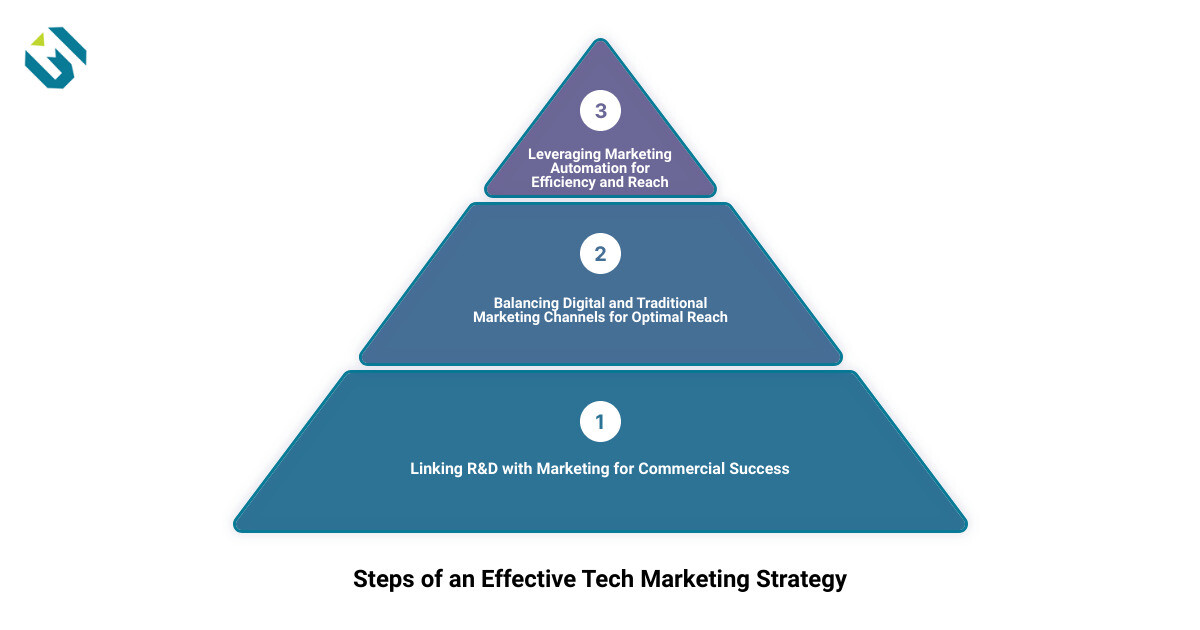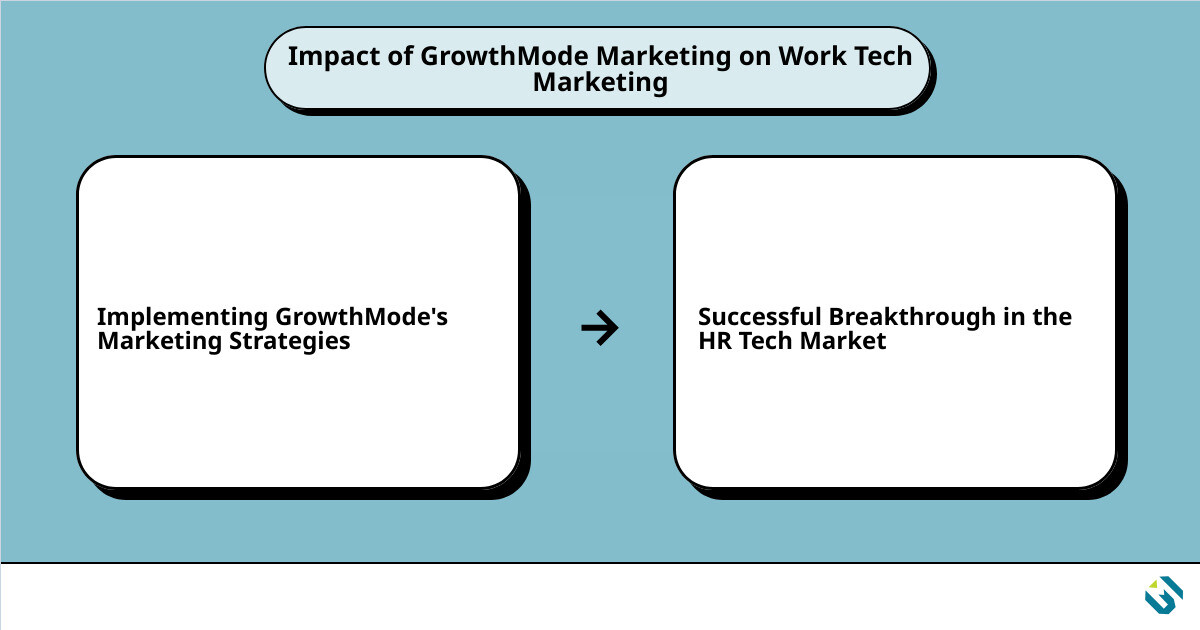In today’s digital age, the marketing landscape for work tech companies is evolving at an unprecedented pace. As technology continues to redefine the way businesses operate, it is imperative for HR Tech and workforce technology companies to stay ahead of the curve. Welcome to the new age of marketing for work tech. In this rapidly changing environment, it’s not enough to just keep up with the trends. To truly excel and drive growth, companies need to leverage innovative marketing strategies that are tailored to the unique needs and challenges of the tech industry. This article will delve into the world of work tech marketing, exploring its unique challenges, the key roles involved, effective strategies for success, and how companies like GrowthMode Marketing are revolutionizing this space. Buckle up as we navigate the fascinating realm of marketing for work tech in the digital era.
Understanding the Unique Challenges of Marketing for Work Tech
Just as the tech industry is known for its rapid evolution and innovation, the marketing landscape for tech companies is equally dynamic and complex. Navigating this landscape requires an understanding of the unique challenges inherent to marketing for work tech.
The Gap Between R&D and Marketing in High-Tech Companies
In many high-tech companies, there is a substantial gap between the research and development (R&D) function and marketing. High-tech companies often have superior R&D capabilities but achieve only mediocre commercial success or even fail completely. This isn’t necessarily due to a lack of marketing skills but rather the disconnect between R&D and marketing^1^.
For instance, consider the HR technology industry, where there are reportedly over 21,000 HR technology companies globally^2^. Despite the different solutions offered by these companies, they are often competing for the same HR budget. This fierce competition and crowded market make it crucial to not only develop innovative solutions but also effectively communicate these solutions to the target audience^2^.
This is where a well-defined and consistently delivered unique point of view becomes instrumental. It helps a company stand out in an overcrowded market and resonate with HR decision-makers who are constantly being inundated with marketing messages and calls^2^.
The Need for a Different Approach in Marketing for Work Tech
Given the highly competitive nature of the tech industry and the rapid pace at which it evolves, conventional marketing strategies may not yield the desired results. Tech companies need to adopt a different marketing approach that aligns with the industry’s unique demands and challenges.
For starters, understanding and addressing the target audience’s needs is paramount. In the HR tech industry, for example, the shift towards digitization and flexibility is a major trend, driven by the growing prevalence of remote work and the impact of the COVID-19 pandemic^3^.
Companies need to offer innovative solutions that address these trends and meet the changing needs of businesses. This might involve developing an HR software that supports remote onboarding and training, or a platform that helps manage employee performance and engagement in a remote setting^3^.
However, having a great product is just one part of the equation. Companies must also leverage effective demand generation strategies to reach their target audience and generate quality leads^3^.
In the next sections, we’ll delve deeper into the key roles in tech marketing and their importance, as well as effective strategies for marketing in the tech industry.
Key Roles in Tech Marketing and Their Importance
In the vibrant landscape of work tech, understanding the key roles in tech marketing and their relevance is crucial. These roles not only help tech companies navigate the crowded market but also facilitate meaningful connections with their ideal customer profile audience.
The Role of Product Marketing in Tech Companies
Product marketing acts as the backbone for tech companies, offering a bridge between the product development and marketing teams. As experts in the tech products and services the company provides, product marketers create targeted content designed specifically to engage and educate potential customers along their buying journey.
Product marketing plays a pivotal role in defining the product’s value proposition, understanding the competitive landscape, and communicating the product’s unique benefits to the market. In essence, they are responsible for ensuring that the right people learn about the product at the right time, and understand why it’s worth their investment.
The Significance of Brand Marketing in the Tech Industry
Brand marketing is another critical player in the tech industry, responsible for shaping the company’s image and reputation. By creating and managing the company’s brand communications, these marketers ensure that potential customers’ first interaction with the company is positive and leaves a lasting impression.
Brand marketing strategies foster awareness, credibility, and trust among the target audience, influencing their perception and their purchasing decisions. They help create a strong brand identity that differentiates the company from its competitors and resonates with the customers’ needs and expectations.
The Impact of Growth Marketing on Tech Companies
Growth marketing, as the name suggests, focuses on driving business growth. It involves using data-driven marketing strategies to attract, engage, and retain customers. Growth marketers aim to create a seamless customer experience across various touchpoints, improving customer satisfaction and loyalty.
For tech companies, growth marketing can provide a significant advantage by helping them understand their customer’s journey and optimize their marketing efforts accordingly. It involves experimenting with different marketing strategies and analyzing their performance to identify what works best in engaging customers and driving growth.
The Importance of Channel Marketing in Reaching the Right Audience
Channel marketing plays a crucial role in reaching the right audience in the tech industry. It involves identifying the most effective channels – be it social media, email, content marketing, or SEO – to reach and engage the target audience.
Through strategic channel marketing, tech companies can ensure their marketing messages reach their ideal customer profile audience, leading to higher engagement rates and ultimately, increased sales.
The Role of Demand Generation and Lead Generation in Tech Marketing
Demand generation and lead generation are two essential strategies in tech marketing. Demand generation helps build awareness and trust among the target audience, driving high growth for tech companies. By creating a large, focused, and targeted digital footprint, tech companies can effectively engage with potential customers and generate demand for their solutions.
On the other hand, lead generation focuses on converting that demand into actionable leads. It involves using various marketing strategies to attract potential customers and encourage them to show interest in the company’s products or services.
In the cluttered market of work tech, understanding these key roles in tech marketing and effectively leveraging them is crucial for HR tech companies to stand out and reach their ideal audience.
Strategies for Effective Marketing in the Tech Industry
The quest for effective marketing in the tech industry doesn’t have to feel like chasing a mirage. With the right strategies geared towards your unique target audience, you can drive high growth and build a strong digital footprint. Let’s explore some of these potent strategies.
Linking R&D with Marketing for Commercial Success
Commercial success in the tech industry hinges on the ability of a company to marry its research and development (R&D) with its marketing efforts. This means that the insights gathered from R&D should guide marketing strategies to ensure that the needs of the target audience are adequately met. It’s not enough to create innovative products; tech companies need to understand their audience’s pain points and address them in their marketing messages. The product launch blueprint is a strategic tool that can guide this process. It involves assessing the competitive landscape, understanding the audience for each product, and developing a product marketing plan that resonates with the target demographic.
Balancing Digital and Traditional Marketing Channels for Optimal Reach
While the tech industry thrives on digital marketing channels like social media, websites, content marketing, and email campaigns, traditional marketing channels still have their place. The key is finding the right balance and knowing when and how to leverage each channel. Paid digital advertising such as banner ads, paid search, and sponsored LinkedIn posts can reach a wide audience, but events like industry conferences and tradeshows also offer valuable opportunities for face-to-face engagement. The goal is to create a diversified marketing strategy that maximizes reach and increases brand awareness.
Defining Target Audiences, Product Positioning, and Key Messages
Each product or service has a target audience whose needs it fulfills. Understanding this audience, how to position your product to them, and the messages they resonate with, is essential for effective marketing. Tech marketers must define their target audiences clearly, understand their pain points, and craft messages that address these pain points effectively. This process involves creating a go-to-market approach that amplifies the brand’s message and engages the audience on a personal level.
Leveraging Marketing Automation for Efficiency and Reach
Marketing automation is a game-changer for tech companies. It not only streamlines the marketing process but also enhances the reach of marketing campaigns. Email marketing, for instance, is an essential component of the marketing process and sales funnel. Automation in email marketing can help track digital analytics such as click-through and open rates, providing valuable data for refining marketing strategies. It’s a cost-effective strategy that enables tech marketers to reach a broad audience without spending a massive amount on advertising.
In conclusion, effective marketing in the tech industry requires a blend of strategic planning, understanding of the target audience, and savvy use of digital and traditional marketing channels. With these strategies in place, tech companies can position themselves for commercial success in the highly competitive tech industry.
Breaking into Tech Marketing: Tips and Insights
Cracking into the world of tech marketing may seem like a daunting task. However, with the right approach, it’s not only attainable but also exciting. Here are some practical tips and insights to help you break into this rapidly evolving field.
Gaining Actual Experience in Tech Marketing
The first step in launching a successful career in tech marketing is gaining actual experience. This doesn’t necessarily mean landing a job at a major tech company right away. Instead, start small and prove your understanding of key concepts like user acquisition and growth. Launch a blog or a social media channel, test ads, try out different content strategies, and experiment with email newsletters.
If you’re open to it, consider freelancing or volunteering your skills at a startup. Many startups are in desperate need of marketing help and would welcome free assistance. This provides an excellent opportunity to gain hands-on experience in driving leads and launching products.
Attending Industry Events and Listening to Industry Podcasts
Networking and continuous learning are crucial in the world of tech marketing. Attend industry events and meetups focused on digital and growth marketing. These events provide opportunities for you to connect with other professionals, learn about the latest marketing strategies, and even discover job openings.
Listening to industry podcasts is another beneficial habit. Industry professionals often share their stories, the challenges they face, and insights into how their roles operate within their companies. This can be invaluable information when you’re preparing for an interview or trying to understand your role better.
Being Knowledgeable in Conversations and Communications
While networking and making connections is important, it’s equally crucial to know your stuff. Cold emails and coffee chats might not lead anywhere if you can’t demonstrate your knowledge and understanding of tech marketing.
Before reaching out to others, ensure that you have a solid foundation of knowledge and some relevant experience to back up your discussions. People are more likely to refer you or pass on your name if you can prove that you understand the industry and can bring value to a company.
Breaking into tech marketing requires thinking outside the box, willingness to learn, and a lot of hustle. By gaining experience, networking, and continuously learning, you’ll be well on your way to a successful career in this dynamic field.
Case Study: GrowthMode Marketing – Revolutionizing Work Tech Marketing
In the sea of tech companies, breaking through the noise can be a herculean task. This is where GrowthMode Marketing comes into play, leveraging the power of demand generation and innovative marketing strategies to help HR tech companies rise above the clutter.
How GrowthMode Marketing Helps HR Tech Companies Break Through the Clutter
GrowthMode Marketing isn’t your typical marketing agency. Their unique selling proposition lies in their distinct focus on B2B companies, especially in the tech sector. They’ve built a reputation for helping businesses build brand awareness, gain trust, and ultimately attract interested prospects. This isn’t just about driving prospects into the sales process – it’s about inspiring prospects to bring businesses into their buying journey.
The agency’s strategic, high-impact initiatives have consistently resulted in shorter sales cycles, higher close rates, and lower customer acquisition costs. By replacing traditional methods of lead generation with demand generation strategies, GrowthMode Marketing has been able to deliver better quality leads and significant growth for organizations in the HR tech industry.
The Role of Demand Generation in Bridging the Gap Between Marketing and Sales
One of the pillars of GrowthMode Marketing’s approach is the alignment of marketing and sales. Recognizing that both departments are instrumental in driving growth, they’ve leveraged demand generation as a catalyst for growth. This creates a collaborative environment where marketing and sales work hand in hand towards a common goal.
Through their podcast, The Demand Gen Fix, GrowthMode Marketing offers valuable insights into the world of demand generation and B2B marketing strategies. They advocate for HR tech marketers to view demand generation as a long-term strategy that can help organizations achieve sustainable growth.
Delivering Meaningful Results: Uncovering Interested Prospects and Creating Market Demand
What sets GrowthMode Marketing apart is their ability to deliver meaningful results. They’re not afraid to push back when clients lose sight of their mission and focus. By maintaining an unwavering commitment to their clients’ unique point of view, they ensure all marketing efforts align with the client’s ideal customer profile and overall business goals.
This clear strategic direction and commitment to their clients’ vision have allowed GrowthMode Marketing to successfully bridge the gap between marketing and sales. The result? HR tech companies achieving their growth goals and cutting a path through the crowded tech market.
The story of GrowthMode Marketing is a testament to the power of innovative marketing strategies in the tech industry. It’s a clear example of how a deep understanding of the industry, coupled with a strategic approach to demand generation, can revolutionize the way tech companies market their products and services.
Conclusion: The Future of Marketing for Work Tech
As we look ahead, the future of marketing for work tech is not just promising, it’s transformative. The exponential growth of the tech industry, coupled with the ever-evolving needs of global workforces, presents unprecedented opportunities for tech companies. However, navigating this landscape requires more than just a great product or service. It calls for a cutting-edge approach to marketing, one that leverages the power of demand generation to attract and convert the right audience.
The HR tech market, for instance, is expected to reach a staggering $76.5 billion by 2031. This growth is being driven by the shift towards digitization, flexibility, and hybrid work, emphasizing the need for HR tech companies to stay ahead of the curve. This is where the power of demand generation comes into play.
Demand generation is not a one-off strategy but a continuous process of building brand awareness, credibility, and trust. It’s about understanding the unique needs and interests of your target audience, creating valuable content that resonates with them, and leveraging the power of SEO, PPC, and social media to reach them. It’s a strategic blend of marketing and sales, aimed at driving high growth and positioning your tech company as a leader in the industry.
Companies like GrowthMode Marketing have proven that a well-executed demand generation strategy can drive unprecedented growth for their clients. By bridging the gap between marketing and sales, they have managed to attract the right audience and convert them into loyal customers. Their success serves as a blueprint for other tech companies looking to make their mark in the industry.
Looking ahead, we can expect marketing for work tech to become even more data-driven and integrated. As the market dynamics continue to change, tech companies will need to stay agile, adapt their strategies, and continue to invest in demand generation to sustain their growth in the long run.
In conclusion, as we usher in a new age of marketing for work tech, the role of innovative marketing strategies like demand generation cannot be overemphasized. With the right strategy, tools, and partner like GrowthMode Marketing, tech companies can navigate the complexities of the market, stand out from the competition, and propel their growth. In the world of work tech, the power of demand generation is not just a trend, but an essential strategy for success.







